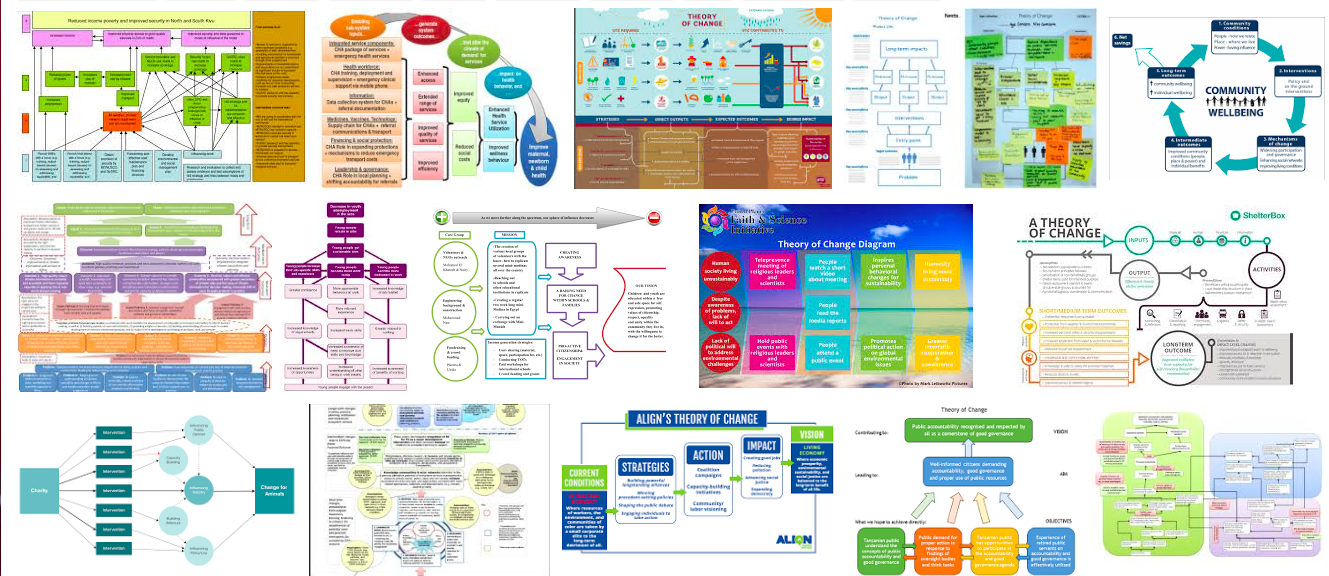Theories of Change look daunting and complicated. A quick search on Google Images reveals a smattering of diagrams, flow charts, arrows and coloured boxes which are difficult to read let alone understand. But we know that Theories of Change can be useful, so do they really need to be this complicated?
There is a simpler way to think about your Theory of Change and it borrows a principle from the Logic Model. Logic models are ways of thinking about your impact in a series of steps starting with your Inputs (i.e. your budget: the things you put in to the project) and include a variety of terms ranging from outputs to outcomes. People often misinterpret the difference between outputs and outcomes so we're not going to dwell on those differences but instead consider a simpler way forward.
Change is a Process
Fundamentally, what your trying to articulate with your Theory of Change, Logic Model or grant application, is the potentially unique process through which your organisation or project is able to create change. Here are five steps you can take to articulate your process in plain English.
Step 1. ACTIVITIES: What do you do?
- What are the Activities you provide?
- These are easy to count.
- E.g. the number of sessions you run of each type
Step 2. Participation: Who gets involved?
- People will hopefully participate in your Activities; that's the Participation you can track.
- Examples of things you can track:
- Number of Attendees at each session
- Age, Gender and demographic splits
- Who attended specifically
Steps 3, 4 and 5: What CHANGES as a result of people's PARTICIPATION in your ACTIVITIES?
Step 3: Are there any changes in how people THINK?
Change always begins in the mind. Consider whether there has been a change in any of these among the people you work with:
- Ability
- Attitude
- Knowledge
- Beliefs
Step 4: Are there any changes in what people DO?
For most of the projects we work on, we are not content to see a change in how people think. Fundamentally we want to change their behaviour. What changes do you expect to see as a result of your project across each of your stakeholder groups?
- What someone does
- Uptake of a habit
- Government policy
- Company policy
Step 5: Are there any changes in what people HAVE?
Until finally, as a result of doing new things, people have better health, more money, better relationships, safer streets, etc.
E.g. You can track whether there has been a Change in:
- Wellbeing
- Savings to the Economy
Connect it together
Now you have a practical version of your Theory of Change, connect all the dots and add it to a document. You can download this template and use it to plot out your metrics.
And get feedback on your Theory of Change
Create a free account on www.Makerble.com and upload your Theory of Change. You can ask for it to be reviewed for free. You can also explore other people's Theories of Change and browse various Theories of Change which have been created by individuals and organisations.










